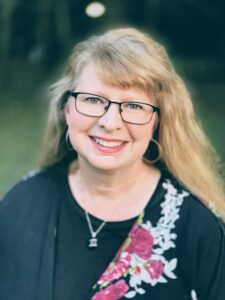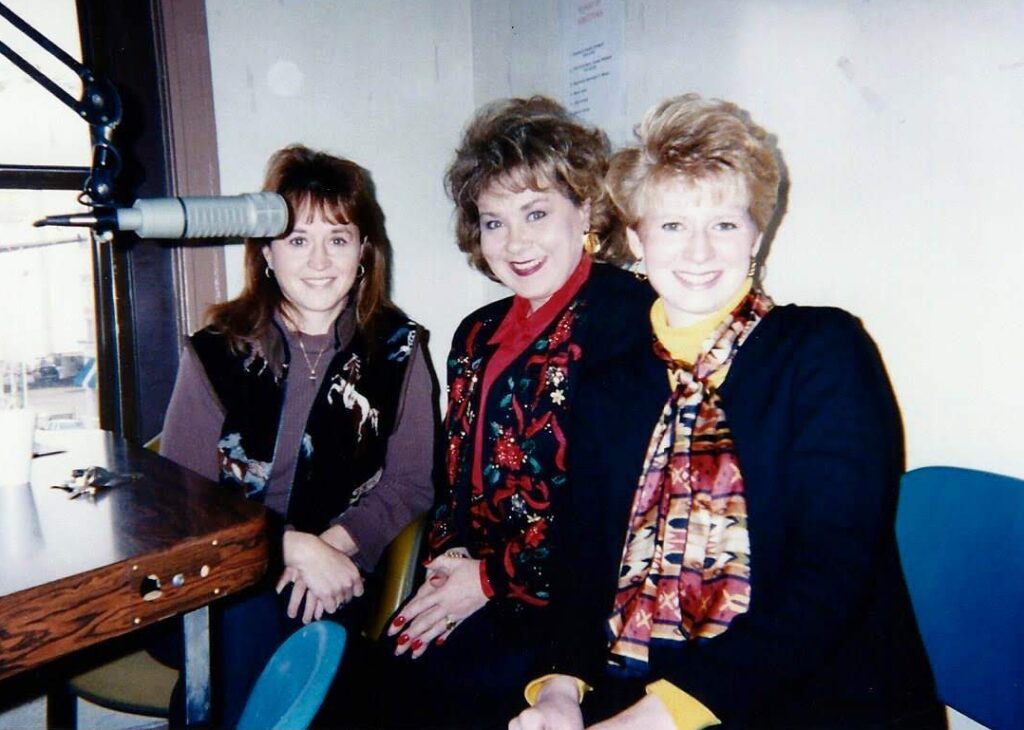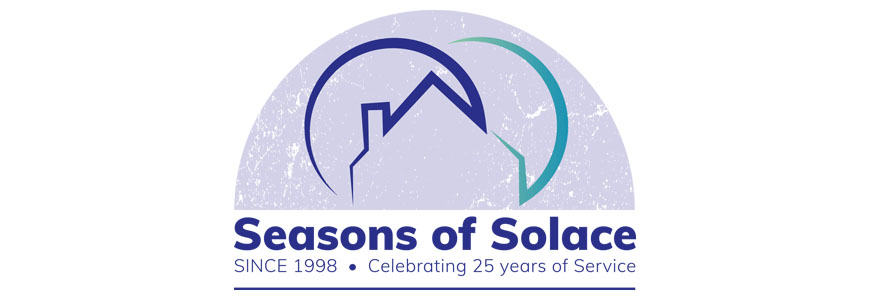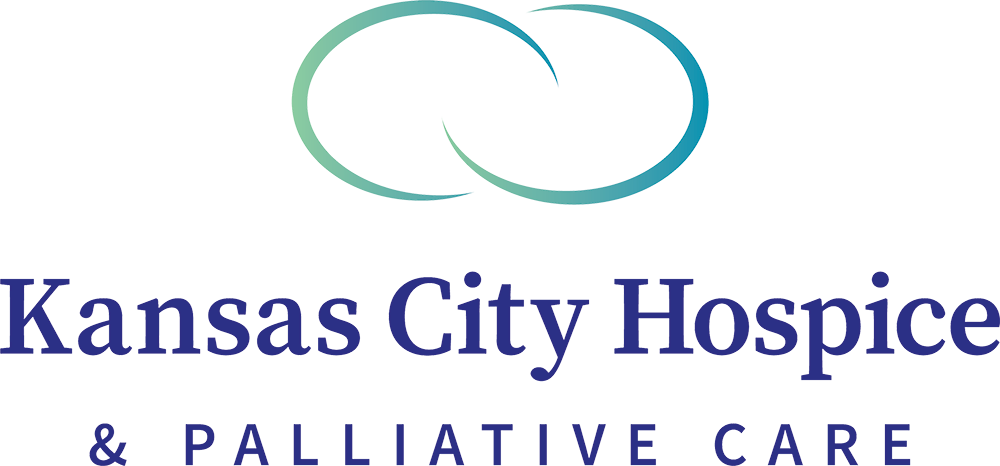By: Dr. Paige Stanfield-Myers, Adult and Child Psychotherapy and Director of Institute on Life Transition
Published: August 22, 2023
Solace House, Kansas City Hospice & Palliative Care’s center for grief and healing was founded in 1998 by two grieving moms who were unable to find support for their children. This center is designed to be a nurturing place to guide children and adults through the difficult time following a death, whether sudden and unexpected or anticipated.
Solace House provides peer support groups for various ages, individual grief support, referrals for crisis counseling and is called upon by local schools, businesses, and community groups to provide guidance and support after a period of loss.
The untold story of how Solace House came to be is truly something to celebrate and there is no better time to honor these humble beginnings than now, as 2023 Solace House celebrates its 25 years of service.

Dr. Stanfield-Myers, Adult and Child Psychotherapy, and former Chief Programming Officer and Program & Clinical Director of Solace House.
The privilege of being part of Solace House’s early days was an experience nothing short of extraordinary. I served as the Chief Programming Officer and the Program & Clinical Director from 1997 to 2002. With so many moving parts in the initial start-up, my primary focus of attention was given to developing a five-week training program for volunteers, selecting volunteers to facilitate the grief groups – or to provide program support in other areas,and conducting the weekly training sessions. At the same time, bereaved families were being interviewed and placed into the program, and grief curriculum was being written for all the different groups. All of this was only possible through the tireless efforts of the deeply adored founders, Janie and Colleen, whose inspiration and vision were the positive life force that set in motion all these milestones that would come to be.
The volunteer training included many modules, some of which were: characteristics of human development, creative expression for children, tasks of grief, confronting personal issues of mortality, invisible losses, group theory and facilitating skills, and a field trip to a funeral home. The first volunteer training took place with paint cans still lining the walls, furniture being delivered, and a donated copier clunking along in the background like a mimeograph machine. Yet, our volunteers were amazing; they knew this place would be special. Some came with their own experiences of childhood loss, but they all came with a heart for service and a fundamental belief that personal triumph and healing from grief can occur best within the context of a caring community of support. As a child, Eddy, our first teen group facilitator, lost his mother in 1981 when the suspended walkways in the Hyatt Regency Hotel in Kansas City collapsed. Tricia and Carl were both school counselors and loved the young participants; Corny was a retired psychiatric nurse whose skills were so valued among the parent groups. Twenty volunteers completed that first Solace House training, and they – along with all those during my time at Solace House – will forever hold a very special place in my heart.
While the initial volunteer training was in process, the families who would eventually become participants in the program were being screened and matched with the services. The curriculum was being written as the families were placed. Other centers for grieving children and their families – like the W.A.R.M. Place in Fort Worth, Texas, and the Dougy Center in Portland, Oregon – provided guidance through their well-established program design. However, the Solace House model was uniquely our own. As the numbers of families were quickly increasing, it became clear that the opening night of Solace House programming would include full groups for all ages of children and their parents. We opened with 10 group facilitators on each of two nights with one 3-5 year old group, two 5-8 year old groups, two 9-12 year old groups, two teen groups, two mom’s groups, and one mixed adult group. Curriculum and creative activities were specific to each group, and the series would run for eight sessions during a 16-week period. The groups in that cycle would take a break and then be invited to continue their participation in that group, switch to another group, or graduate. After the first session, the groups would be closed to new participants so that group formation was not disrupted. A family could participate for two years without the curriculum repeating, and the children would often move into a new age group during their participation. New families did not have to wait long to join, as a new series was always starting, and more volunteers were being trained.
As the basic structure of the program became sustainable through active volunteers and ongoing curriculum development, other additions were made to our program nights. These included three more nights of programming, child loss groups, men’s groups, and special focus events, like pregnancy loss. Graduate students in counseling, psychology, marriage and family therapy, and social work from six local universities became our interns who would also lead support groups, provide entrance and exit interviews to participants, deliver supervised grief counseling to family members, and assist with volunteer debriefing following the support groups.

Janie Ewell and Colleen Millet-Pelz (co-founders of Solace House) and Dr. Paige Stanfield-Myers doing a radio program for KKFI which focused on Solace House and children’s grief, January 22, 1998.
A collective memory that stands out for me is the Community Time that happened after the groups had ended each programming night. Families and volunteers would all gather together to sing along with the pre-recorded version of the “Solace House Song” played off a cassette player. They would then share birthdays, milestones, and other joys that their departed family members would have loved to hear about. The children shared about losing teeth and having parties, winning spelling bees and hitting home runs. The families cheered for one another, and these moments became the most heartfelt snapshot of an authentic community of care.
Solace House, Kansas City Hospice & Palliative Care’s center for grief and healing, is honored to celebrate 25 years of empowering the Kansas City community through our specialized Grief Support Services and programs. During the past quarter-century families coping with the loss of a loved one have found a safe haven here.
Thanks to community support, countless families have found healing, hope, and renewed purpose after experiencing loss. Join with us in celebrating 25 years of serving our community, by visiting our Seasons of Solace website to offer a gift of $25 or more. Your gift will help Solace House continue its mission by providing grief counseling and support free of charge to families in our community.
Thank you to those who supported Solace House in its infancy and to those who continue to carry its torch and live out its mission. Your role is immeasurable, and your contributions are forever imprinted on the hearts of thousands in Kansas City.

Posted in General, Grief Support, Voices of Care
